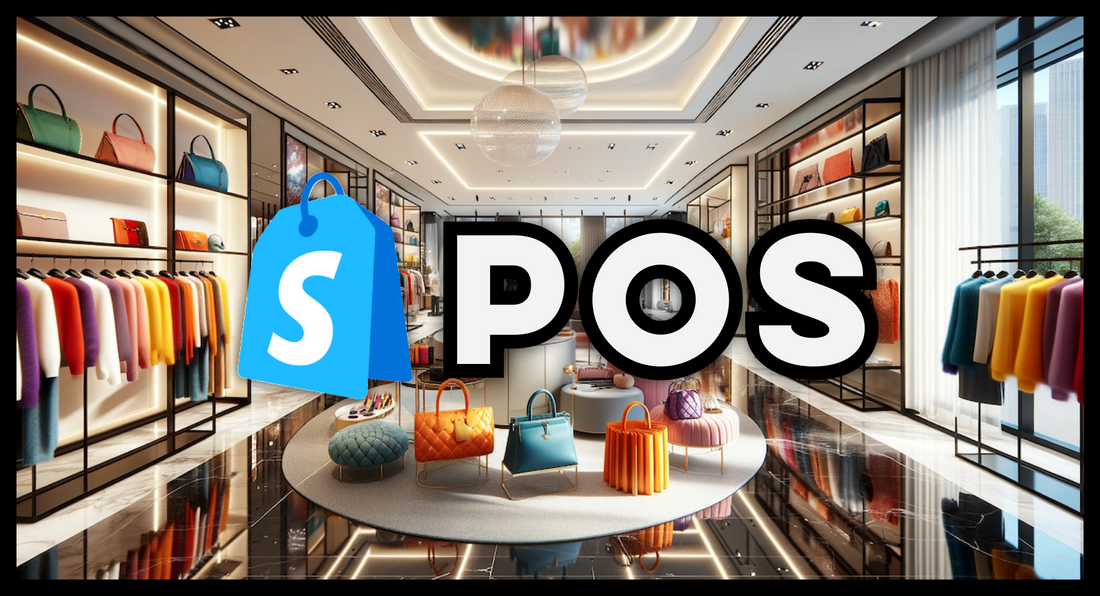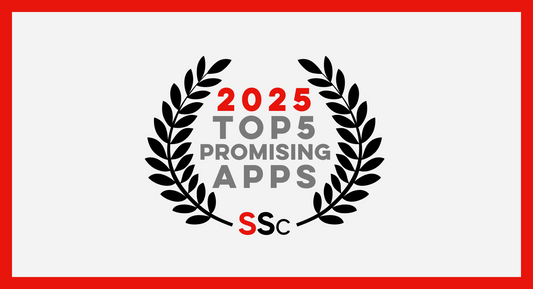Shopify has currently an exceptional momentum in the eCommerce world. In 2024, it seems quite impossible to start an online store replatforming project without looking at what Shopify is offering...
On the contrary, quite few Retail experts are already diving into Shopify POS, Shopify's physical store management solution. Mainly because it has an extremely simple and accessible design, which can suggest at first glance that the solution does not have a great functional depth.
And it's true that, compared to the old softwares that have been used for decades by many brands, with their complex and counter-intuitive screens, Shopify POS is clearly something else!
In this article, let's have a look at Shopify POS and its main features. Knowing that everything goes always very fast at Shopify, and that the coming months will of course provide a lot of new features to Shopify POS...
More than ten years in the making!
Shopify has officially launched Shopify POS on August 12, 2013. So yes, it's barely known, but Shopify has already more than 10 years of experience in powering physical stores!
Aimed at small merchants selling online and operating one physical store, Shopify POS was introduced at no additional cost. Shopify offered merchants who were selling online and in stores, an "omnichannel by design” software, using a unique customer database, a unique order database and a unique product catalog. Thanks to Shopify POS, merchants spared time and money!
After several years of growth, Shopify has introduced a major evolution of Shopify POS in Spring 2020, both in terms of design and functionalities. From that date, Shopify POS has now been available in two versions: POS Lite, which remains free, and POS Pro, introduced at a price of 89 dollars (79 euros) per month and per physical store.
An iOS and Android App

One of the major differences between Shopify POS and most of the traditional Retail softwares is that Shopify POS cannot be installed on a PC or a Mac. The solution can only be used with a tablet or a smartphone powered by iOS or Android operating systems.
And you know what? No more complicated maintenance of computers (Windows in particular) in stores, requiring support teams all across the country! And no more computer glitches which were regularly disrupting the stores business!
The same version of Shopify POS is available on iOS and Android, although there may be some slight differences from time to time (the iOS version is sometimes updated before the Android version).
How to enable Shopify POS
In the Shopify admin, the Online Store sales channel is always enabled. To use the Shopify POS App, merchants simply have to add the Point of Sale channel, then confirm a few settings.
At the same time, in the admin Settings menu, a location has to be created for each physical store that will use Shopify POS. Please note that, since January 2024, the Basic, Shopify and Advanced plans do not allow more than 10 locations (for a network with more physical stores, the Shopify Plus plan allows up to 200 locations).
Then, the only remaining thing to do is to download the Shopify POS App onto a smartphone or a tablet, and log in with the same credentials (email and password) as for the Shopify admin.
POS Lite vs POS Pro
The free version of Shopify POS, POS lite, allows merchants to manage a small store or a pop-up store. This version offers the basic functionalities of a cash register.
The paid version of Shopify POS, POS Pro, has a maximum functional depth. POS Pro allows merchants to:
- Individually manage each staff permissions on Shopify POS and attribute their sales,
- Take advantage of all the omnichannel features, such as managing returns and exchanges, shipping orders to the client, sending the basket by email for a remote payment,
- Allow to start a basket from one device and retrieve it from another device from the same store,
- Benefit from automatic reductions already set up for online sales,
- Customize printed receipts given to customers,
- Look at detailed statistics on sales,
- Use the Stocky App (see below).
Merchants can mix the use of the two versions of Shopify POS, the selection being made location per location.
Shopify updates the paid version of Shopify POS very regularly, thus offering an ever increasing functional depth.
Amazingly easy to use
One of the greatest strengths of Shopify POS is its extremely intuitive design.

The Shopify teams have worked on a UX design that is really simple to use. The way various information are displayed is specifically designed to minimize the number of actions for the sales staffs.
That's why training sales teams to Shopify POS is always super fast. As soon as staffs start practicing with Shopify POS, they immediately feel at ease. So training can actually focus on changes in processes (and some habits...).
"Omnichannel by design"
Another great strength of Shopify POS is being a native omnichannel solution. Shopify POS is using the same databases (products, customers, orders) than the online store, there is no (complex and expensive) connector to build between web and Retail (given that the data are the same!), so the entire platform is immediately ready to operate.
Thanks to this data centralization, all omnichannel functionalities (display store inventory on the website, offer click and collect, send products to the home of a customer who has come to pay in store,...) can be activated in just a few clicks.
But it also becomes possible to sell gift cards that are valid both online and in store, or to offer omnichannel promo codes.
And as it is the same Shopify admin that manages online and physical stores sales, Shopify APIs also make it possible to manipulate data coming from both online sales and physical stores.
Shopify hardware
In some countries, Shopify is selling its own hardware to Shopify POS merchants, including card readers:

Launched in fall 2022, the newest reader, POS Go, is a portable tool for in-store sales teams, featuring both a screen with Shopify POS and a card reader.
Shopify also offers a flexible stand to secure and charge a tablet, and an Ethernet connection hub.
In some countries where Shopify hardware is not available, a third-party card reader, the WisePad 3, may be available.
The Stocky App
Merchants using the paid version of Shopify POS (POS Pro) have access to the free Stocky App. Once installed in the Shopify admin, this App allows merchants to carry out some inventory tasks related to the management of physical stores, and in particular:
- Stocktakes,
- Replenishment requests,
- Transfers in between stores.
The Stocky App is the perfect illustration of Shopify's philosophy: offering a simple solution to existing pain points, knowing that it is up to each merchant to know if this can be enough for them, or if they need a more sophisticated (paid) solution.
Also, Stocky's store transfers functionality is directly available in Shopify POS screens, allowing sales teams to directly manage these transfers.
Stocky has import and export features, but also some APIs access, allowing merchants to, for example, automatically send a replenishment request to a supplier.
Quite curiously, Stocky is only available in English, and uses an outdated UX far from the current Shopify standards...
Public Apps for Shopify POS
Some of the Public Apps available in the App Store are compatible with Shopify POS. This is the case, for example, with Apps for managing loyalty programs, or Apps for creating invoices.
There are also Apps that are specifically designed for Shopify POS. And these Apps can, since Summer 2023, be integrated directly into Shopify POS screens. This is for example what the ShopFields App can do, displaying custom fields in the order screen.
The App Store has a category displaying all the Apps that work with Shopify POS.
Compatibility with other Shopify features
If Shopify POS is natively omnichannel within the Shopify platform, compatibility is currently not complete with some other core features of Shopify. Here is a quick overview of compatibility:
- Languages: Shopify POS is displayed in the language of the smartphone or tablet it is installed on. A setting in the Shopify admin allows merchants to choose the language for certain content (product descriptions for example), independently of the language used for Shopify POS.
- Markets: Shopify POS is not yet compatible with Markets (at least at the time this article is published), but it seems imminent. For the moment, all Shopify POS stores linked to the same admin will use the main market prices (and it is not possible to have different prices between web and Retail).
- Payment Platforms: Only Shopify Payments can work completely integrated with Shopify POS (and connecting with a card reader), provided it has already been enabled as a payment platform for online sales.
- Currencies: Shopify POS is not compatible with Shopify Payments multi-currency option.
- Self-service returns management: Shopify POS is compatible with Shopify native returns and exchanges management.
- B2B: Shopify POS is not compatible with Shopify Plus B2B features.
In which countries is Shopify POS available?
Shopify POS is available in all countries where the App can be downloaded from the Apple Store or from Google Play.
But the card reader synchronization with Shopify POS (which also requires using the Shopify Payments payment platform) is currently only available in 14 countries: Australia, Belgium, Canada, Denmark, Finland, Germany, Ireland, Italy, Netherlands, New Zealand, Singapore, Spain, United Kingdom, United States.
In other countries, Shopify POS can be used with an independent card reader, requiring a manual entry of the amount of each transaction.
Shopify POS cost
The Lite version of Shopify POS is included in all Shopify plans.
The Pro version of Shopify POS cost is $89 (79 euros) regardless of the Shopify plan.
Specifically for the Shopify Plus plan: the first 20 POS Pro installed are free, but Shopify applies a variable commission of 0.25% on the revenue generated by physical stores.
Since September 2023, Shopify has a new Retail plan at $89 (79 euros), which includes the Shopify admin with a basic online store (no theme customization) and the possibility to use POS Pro in a physical store.
Good to know: the cost of Shopify POS is per store, not per smartphone or tablet. Merchants can therefore use as many devices as they want in each store, which can be very practical during busy periods!
Shopify POS features roadmap
Shopify POS is improving every month, and several important updates (including compatibility with Markets) are expected by the end of 2024.
It will be particularly useful to have a look at future Shopify Editions, with a new website being released every 6 months and presenting all the new features of the platform, including on Shopify POS.
To discuss Shopify POS features and their use cases, feel free to contact us.





